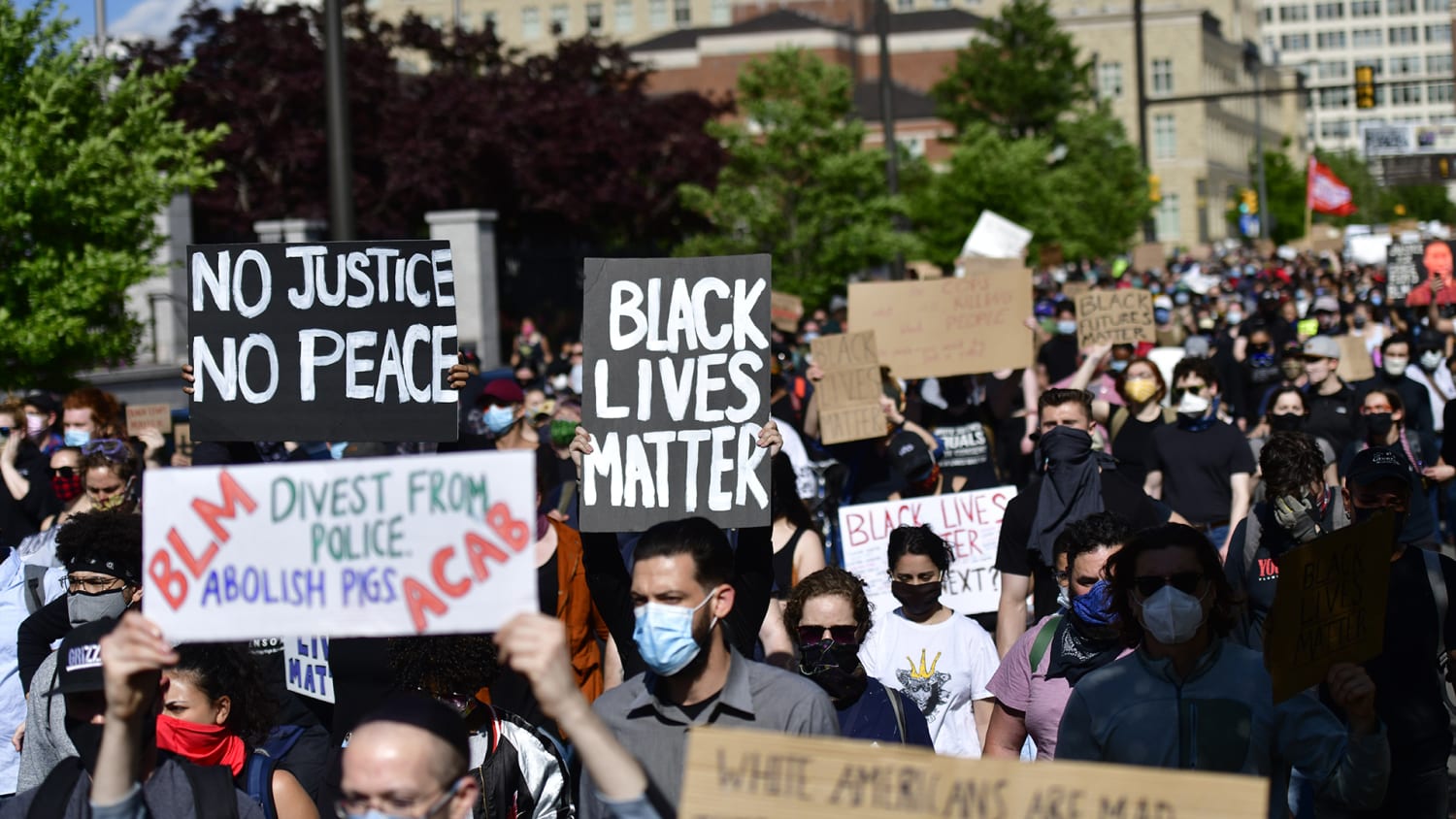
In 2013, Alicia Garza offered words of comfort in a Facebook post to Black people after George Zimmerman was acquitted of murder in the killing of 17-year-old Trayvon Martin: “Our lives matter.” From the phrase, Garza and her friends Patrisse Cullors and Opal Tometi created #BlackLivesMatter.
What started as a poignant hashtag has come to define a generation. In seven years, Black Lives Matter has become a multichapter organization that has changed the very framework with which the nation talks about race.
“The conversation around race didn’t exist in a vast capacity until we saw the BLM movement, this surge,” says T. Sheri Amour Dickerson, executive director and core organizer of BLM Oklahoma City. “Now difficult conversations, honest conversations, and even some discourse, have become part of the daily discussion here in Oklahoma, and I think that goes nationwide in many different factions. It’s also become more intergenerational.”
Its cultural impact cannot be denied
A movement, a slogan, a rallying cry. Black Lives Matter has had many identities since it was founded on a mission to “eradicate white supremacy and build local power to intervene in violence inflicted on Black communities … ” Now, it’s important to ask whether the organization, officially called the Black Lives Matter Global Network Foundation, has made good on its promise to spur positive changes in Black people’s material lives.
Some 30 BLM chapters have popped up across the country since the movement’s inception, many with a set of demands unique to their city’s Black population. BLM members in Los Angeles successfully fought for the firing of Police Chief Charlie Beck. In Chicago, members demand that leaders close the Homan Square detention facility. And in New York, members want a national day of remembrance for victims of police violence.
Over the years, some of these city-specific demands have evolved, some have been successful, and many have gone unmet. Despite any policy failures, though, the movement has helped shift the national conversation about policing and change the way leaders respond to highly publicized acts of police violence. Recently, the BLM network partnered with the Movement for Black Lives to fight for the Breathe Act, a four-part federal proposal demanding that leaders redirect funds from law enforcement entities to community services. And on the heels of BLM’s rise, Garza founded Black Futures Lab, which aims to build Black political power through policy and elections.
It’s worth noting that BLM has come to function as a catch-all for pro-Black, anti-racist efforts that exist independently of the organization. Still, the cultural impact of the term can be felt throughout the nation, and nowhere is this more evident than on social media.
From 2014 to this May, #BlackLivesMatter was tweeted or retweeted 39.2 million times, but the hashtag was shared more than 100 million times in the month after George Floyd was killed, according to a report from Kivvit. The Floyd protests of the summer pushed the movement forward in new ways, the report shows.
At least 62 Fortune 500 companies posted about Black Lives Matter on Facebook in the wake of the summer’s protests. And BLM Facebook posts by popular brands like Nordstrom, Ben & Jerry’s and others saw more engagement than usual posts, according to the report. Before the summer’s protests, just two Fortune 500 companies had posted about the movement, the report said.
“Having the technology to where we’re able to actually create international conversation around how race affects each of us is something I’m very proud of,” Dickerson says. “This movement has really moved the needle.”
The movement has also received support from leaders like the late Rep. John Lewis, D-Ga., who told BLM protesters in June, “You must be able and prepared to give until you cannot give any more.” The renowned activist Angela Davis praised the movement: “‘Structural racism,’ ‘white supremacy,’ all of these terms that have been used for decades in the ranks of our movements have now become a part of popular discourse.”
And the world has been quick to recognize BLM as a force for change — the global network was awarded the Sydney Peace Prize in 2017, and Cullors appeared onstage at the 2018 Academy Awards. While BLM may not have reached all of its policy-based goals, its social and cultural impact cannot be denied.
Years after its inception, BLM still stands as a critique of the status quo, and has grown so powerful that many often conflate the organization with anti-racism efforts in general. The George Floyd protests of the summer have been called the broadest in the nation’s history, generating more media coverage than any protest in 50 years.
The organization has its challenges
But what appeared to be a changing tide in public opinion has since faded along with the protests. Support for the BLM movement reached a high in June with 67 percent of U.S. adults expressing at least some support for the movement, according to Pew Research. The figure had shrunk to 55 percent by September, Pew reported. Now, 48 percent of American voters support the movement, according to recent tracking data from Civiqs. (The recent number still shows an increase from pre-protest levels.)
The change is most notable among white adults. Their support for the movement reached 60 percent in June before falling to 45 percent, Pew reported (even though white Americans have adopted more liberal racial attitudes overall since the start of the BLM movement).
This has been a common trend throughout history, said Dwight Watson, associate professor of history at Texas State University.
“I expected white folks to disappear,” Watson said. “White support tends to peter away. The way you were taught to understand the world is ultimately how you respond to it in times of crisis. With that said, most young white people did not have an oppositional upbringing to police or the government. So many of them didn’t sign up to die for the cause. And after a while, many of them wondered if the cause is really that important.”
Even for all of its cultural progress, BLM as a movement and an organization hasn’t been immune to criticism. It had been praised for its initially decentralized, leaderless structure, and lauded for moving away from the leadership models of its predecessors, which usually focused on charismatic male leaders.
But some have said BLM has lost its way over the years. Passionate chapters held rallies in response to violence, but what was once viewed as a unique, fresh way of fighting for justice may have, over the years, become ineffective, critics argue. Even Cullors, now the executive director of the global network, has acknowledged the organization’s shortcomings.
“The urgency of Black Lives Matter’s work has dictated our form and function. Often, we have operated in ‘rapid response’ — deploying people and resources to stem, both literally and metaphorically, the bleeding in our communities. We have paid dearly for it,” Cullors wrote in a September letter. “We have leapt into the fray with inadequate funds. We have worked off half-drawn blueprints and roadmaps that led to untenable ends. We have exhausted the most self-sacrificing among us without providing adequate time to recover or a fully-realized vision for the long haul.”
Nonetheless, the movement’s popularity and mission have led to much monetary support. This allowed the global network to offer some $6.5 million in grants over the summer to support grassroots organizing under its BLM Grassroots initiative. The offering was the global network’s commitment to local organizing in 2020 and 2021. But the move to a more centralized structure, and the doling out of millions, has prompted criticism from BLM’s local, on-the-ground chapters.
A recent joint statement from several chapters raised concerns about “financial transparency, decision making, and accountability” in the larger organization. The chapters said Cullors’ appointment as boss and the founding of BLM Grassroots came without the knowledge of many chapters. They also said most chapters have received little to no financial support from the global network since 2013.
“This is not a new conversation we’re having. It’s one that keeps coming up,” said Ariel Lipscomb, an organizer with BLM Denver. “We’ve consistently asked for accountability. We’ve consistently asked for transparency. We’ve consistently asked for shared power and for the actions of BLMGN to reflect the work that we do.”
Jessica Louise, an organizer with BLM Indianapolis, added: “They’ve built their platform off of the idea that Black lives matter. But when you try to privatize and commodify something that belongs to everybody, that’s when you run into problems. The social capital that’s been used to build has been done on the backs of people who are now being told, ‘You’re not part of the club.’ We’re not asking for anything that anyone else would not be asking for.”
Celebrities have reportedly donated millions to the global network, and records show that Thousand Currents, a nonprofit that fiscally sponsors the global network, gave $1.8 million to BLM in 2019. Activists have consistently raised doubts about where the money goes and how local chapters are funded. The statement is a blatant request for answers from chapter organizers who say they rely on direct donations from community members and rarely (if ever) receive financial support from the global network.
“The trickle down ain’t working,” says Vanessa Green, of BLM Hudson Valley, New York.
The Black Lives Matter Global Foundation did not respond to a request for comment.
Despite a lack of resources, local BLM chapters have managed to make influential advances in their communities.
Green says BLM organizers in Hudson Valley managed to convince leaders at Nyack Public School district to implement a policy banning school staff from calling police without first notifying parents when a child is experiencing distress. In Denver, a Covid-19 relief program has managed to provide housing and food for 25 families, Lipscomb says. Louise said the City Council in Indianapolis has agreed to make a pair of review boards civilian-majority entities thanks to BLM organizers. In Washington, D.C., organizers have distributed money and resources to people in need in a massive mutual aid project, says April Goggans, with BLM D.C.
It is this community-focused work that organizers hope will define the BLM organization in the years to come, the chapter members say. Seven years in, the organization is beginning to shift its focus from condemning the powers that be to fighting for new legislation and policy changes. If the current social media stats are any indication of the movement’s future, the cultural phenomenon will maintain its hold on the public — even if that support fluctuates. As for the global network, organizers fear the divide between the international entity and its local chapters will only grow.
“I think more about sustainability than popularity. And I know our work sustains itself because we adapt to the needs of our people,” Lipscomb said.
YahNé Ndgo, of BLM Philadelphia, argues that the BLM Global Network may be more committed to serving the status quo than Black people.
“The actual movement is going to sustain itself because we serve the liberation of our people,” Ndgo said. “Maybe these things will come in alignment, and if it doesn’t then we need to make sure our communities are educated about who are their friends and who are their folks.”
Follow NBCBLK on Facebook, Twitter and Instagram.
Source: | This article originally belongs to Nbcnews.com










